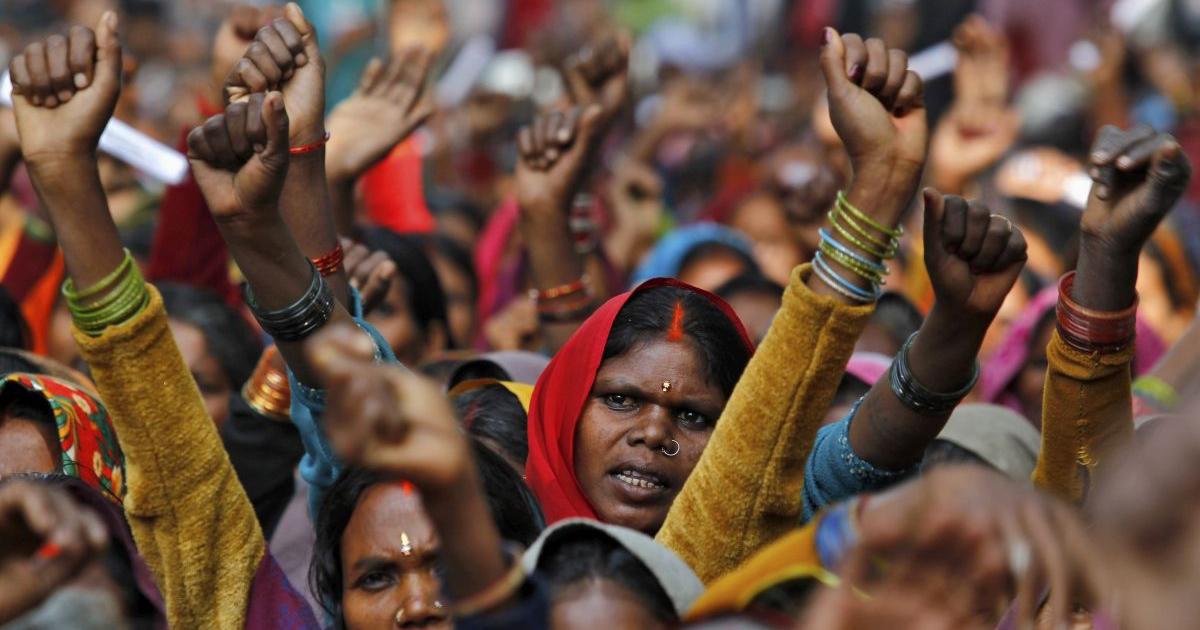Whereas previously SC affirmed indigenous people’s inalienable rights to their land, in 2019, under the Modi Regime, it now orders their unilateral eviction. The SC has turned established constitutional jurisprudence on its head

Image Courtesy: Parivartan Sharma/Reuters
There are three significant SC judgments on the indigenous Adivasi people’s rights over their land and natural resources:
1. In 2011, the SC, hearing a complaint petition by a young Adivasi woman who was raped and paraded naked by upper caste persons in a Maharashtra village, had observed
“The ancestors of the present tribals or Adivasis (Scheduled Tribes), were the original inhabitants… The injustice done to the tribal people of India is a shameful chapter in our country’s history. The tribals were called ‘rakshas’ (demons), ‘asuras’, and what not. They were slaughtered in large numbers, and the survivors and their descendants were degraded, humiliated, and all kinds of atrocities inflicted on them for centuries. They were deprived of their lands, and pushed into forests and hills where they eke out a miserable existence of poverty, illiteracy, disease, etc. And now efforts are being made by some people to deprive them even of their forest and hill land where they are living, and the forest produce on which they survive… Despite this horrible oppression on them, the tribals of India have generally (though not invariably) retained a higher level of ethics than the non-tribals. They normally do not cheat or tell lies, or commit other misdeeds, which many non-tribals do. They are generally superior in character to non-tribals. It is time now to undo the historical injustice to them.” [SC Criminal Appeal 11 of 2011]
2. In 2013 when the Adivasi people in Niyamgiri, Odisha, resisted their land being taken over by a corporate Vedanta co the SC ordered “The (adivasi) communities’ decisions must be respected, and projects must not be allowed without agreement by the communities in their favour… gram sabha proceedings in Niyamgiri take place independently and completely uninfluenced,.. the FRA protects a wide range of rights of forest dwellers and STs including the customary rights to use forest land as a community forest resource and not restricted merely to property rights or to areas of habitation.” [SC Niyamgiri judgment, 2013]
3. Now, reversing its own established jurisprudence, under the Modi regime, the SC itself perpetuates this historic injustice on Adivasis. The recent SC judgmentpassed a few days ago by a three member bench of Arun Mishra, Navin Sinha and Indira Banerjee does just that. The central government that has been hyper active in other matters before the Supreme Court (be it triple talaq or any other) simply abdicated responsibility to defend the FRA in the Supreme Court.
While hearing a petition by a wild-life protection group, the SC gave directions to the Chief Secretaries of 21 Stateswhich are as follows:
(i) Give a lowdown of how many claims of Scheduled Tribes (STs) and Other Traditional Forest Dwellers (OTFD) have been adjudicated under the Forest Rights Act, 2006.
(ii) Give the status of eviction of people whose claims have been rejected under the Act.
(iii) Explain in affidavits why even after attaining finality, eviction was not done.
(iv) The Chief Secretaries should ensure that the eviction of rejected claimants is carried out. They have to file the compliance reports on or before July 24, 2019 which is next date of hearing. [The Hindu, 22 February 2019]
Some troubling questions emerge:
The fact is the process of recognising rights has been poorly implemented. Of the 41 lakh claims filed so far, 18 lakh have been approved, 3 lakh are still being processed and the remaining 20 lakh have been rejected.
Even when land-title is given there are layers of deception. The FRA authorises every forest-dwelling family at least two hectares (five acres). But the reality is if a family claims four acres, it is given 40 decimals or even less! There is a huge difference between the claim of four-five acres and where the ‘authorisation’ of 40 decimals?A clear injustice.
- Is not the Gram Sabha the most credible body to assess the genuineness of the claims? The members of Gram Sabha know who has been residing and cultivating which pieces of land and for how long.
- How are Committees at the Block and District level equipped to know whether the claims are true or false? The members of these committees are mostly outsiders and non-Adivasis who have no sympathy towards the claimants.
- Has the judiciary the authority to order eviction of Scheduled Tribes people from Scheduled Areas?
- Is it not a plot to clear forests with its sub-soil minerals and hand them over to corporate mining companies?
The FRA was meant to correct a ‘historic injustice’, but the misuse of the law by the bureaucracy and the SC now approving this misuse is nothing short of perpetuating the ‘historic injustice’.
Related Articles:
